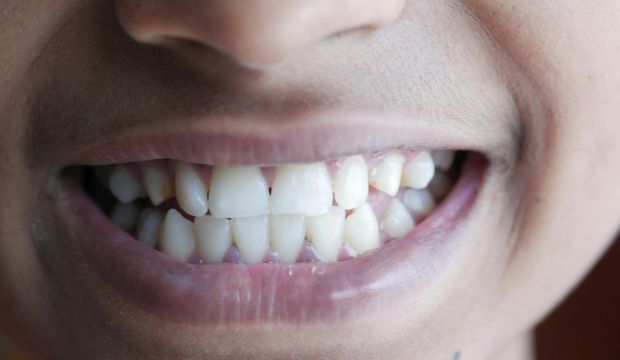- Mon - Fri: 8 AM - 5 PM.
- 1806 Professional Dr A, Sacramento, CA 95825

A beautiful smile isn’t just about straight teeth — it’s also about a balanced bite. When your upper and lower teeth don’t align properly, it’s known as a crossbite. Left untreated, a crossbite can cause uneven wear, jaw pain, and even changes in your facial structure.
But what if you could fix it without wearing traditional metal braces?
Good news — with today’s advanced dental technology, there are effective, comfortable, and nearly invisible ways to correct a crossbite. Let’s explore expert-approved options that can transform your bite without the brackets.
A crossbite occurs when the upper teeth sit inside the lower teeth instead of overlapping them. It can affect the front (anterior crossbite) or the back teeth (posterior crossbite).
Common causes include:
Genetics and jaw size differences
Prolonged thumb-sucking or pacifier use in childhood
Early loss of baby teeth
Mouth breathing or improper swallowing habits
While a crossbite might seem minor, it can lead to long-term problems such as tooth wear, gum recession, TMJ discomfort, and even headaches if left untreated.
A crossbite doesn’t just change how your teeth look — it affects how your jaw functions. Over time, untreated cases can cause:
Chronic jaw pain or clicking
Uneven facial symmetry
Tooth fractures or wear
Difficulty chewing or speaking
Gum inflammation due to improper bite pressure
Correcting it early not only improves your smile’s aesthetics but also protects your long-term oral health and confidence.
The most popular and discreet way to fix a crossbite without braces is through clear aligners.
Aligners like Invisalign use a series of custom-made trays that gradually move your teeth into the right position.
Why They Work:
Each aligner is designed to apply gentle, controlled pressure.
They can treat mild to moderate crossbites effectively.
They’re removable, making oral hygiene easy.
Virtually invisible — perfect for adults and professionals.
Patients typically switch trays every 1–2 weeks, and results may appear in as little as 6 to 18 months, depending on case complexity.
For patients (especially children or teens) whose jawbones are still developing, a palatal expandercan correct a crossbite by widening the upper jaw.
How It Works:
The device is attached to the upper molars.
A small screw in the center is turned daily to gently widen the palate.
Over weeks, the bone adapts to this new width, allowing teeth to align properly.
This option is most effective in growing patients, helping prevent the need for braces or surgery later.
Sometimes, crossbites aren’t caused by the teeth but by improper muscle habits — like tongue thrusting or mouth breathing. Myofunctional therapy focuses on retraining these habits through guided facial and tongue exercises.
Benefits:
Strengthens facial muscles
Improves jaw alignment naturally
Supports long-term orthodontic stability
Works well as a complementary treatment with aligners
It’s a gentle, non-invasive approach — particularly beneficial for children showing early signs of misalignment.
In mild cases where only a few teeth are affected, dentists can use cosmetic restorations such as:
Dental bonding
Tooth reshaping (enameloplasty)
Porcelain veneers
These treatments subtly adjust the bite line, improving alignment without full orthodontic intervention. However, they’re suitable only when the underlying jaw alignment is healthy.
For severe crossbites in adults where jawbone growth has completed, orthognathic surgery or a hybrid approach combining aligners and minor surgical adjustments may be needed.
While this sounds intimidating, modern dental techniques have made it far less invasive than before — ensuring quicker healing and lasting results.
Even after non-braces treatment, retainers play a vital role in maintaining the new bite position. They keep the teeth from drifting back to their previous misalignment and help stabilize your jaw muscles.
At Dental Krafts, every crossbite correction plan includes a personalized retainer protocol to ensure permanent, comfortable results.
Traditional braces were once the only way to fix crossbites. Today, thanks to digital scanning, 3D treatment planning, and custom aligners, patients can correct their bite discreetly — often without anyone noticing they’re undergoing treatment.
At Dental Krafts, our orthodontic specialists use precise digital imaging to create tailored plans that deliver beautiful, balanced smiles without the metal.
Final Thoughts
You don’t always need braces to fix a crossbite. With advanced treatments like clear aligners, palatal expanders, and myofunctional therapy, it’s possible to achieve alignment comfortably and confidently.
Bad bites can affect more than your smile — they influence your oral health, comfort, and even facial balance. If you suspect you have a crossbite, schedule a consultation with Dental Krafts today and explore modern, braces-free options designed just for you.
No. Crossbites do not self-correct and can worsen with time. Early evaluation is the best way to prevent complications.
Clear aligners can correct mild to moderate cases. Complex skeletal crossbites may require expanders or surgical help
They may feel tight for a few days, but discomfort is mild and temporary. Most patients adapt within a week.
Depending on severity, treatment can range from 6 months to 2 years. Early intervention leads to quicker results.
Quick Links
Services
Areas We Serve
Contact info
Open hours
patient, primary care, physician, doctor of medicine, family medicine, primary care physician, internal medicine, medicare patients, health care, medicaid, physicians, primary care physicians, schedule an appointment, primary care providers, accepting new patients, doctors accepting patients near me, doctors taking patients near me, find a family doctor near me, new patient doctors near me, family doctors accepting patients, doctors accepting patients, dr accepting patients, family physicians accepting patients, new doctors taking patients, physicians taking patients, dentist in sacramento, dental implants, general dentistry, cosmetic dentistry
dentist 95825, dental krafts, best dentist near me, indian dentist near me, emergency dentist, broken tooth, affordable dentist near me, dental financing, same day dentist appointment, neha sharma dds, new patient special offers, dental krafts sacramento